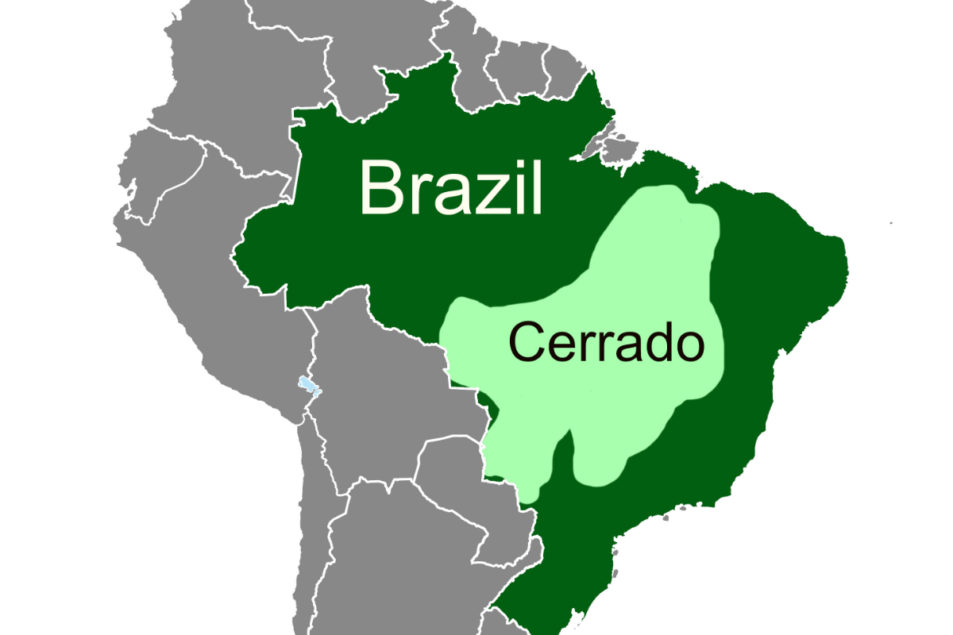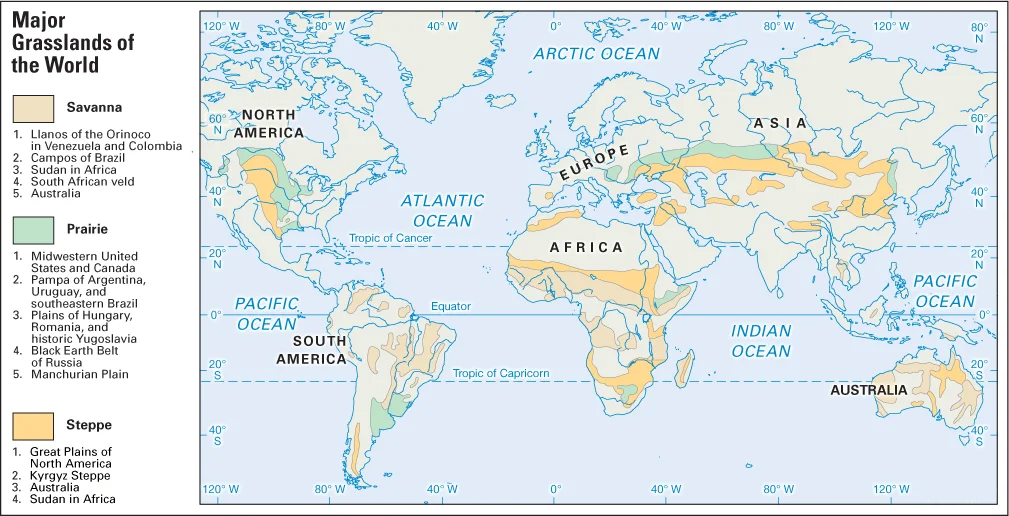Deforestation in Cerrado: Brazil | 05 Jan 2022
For Prelims: Deforestation, its causes and effects, Savanna, location of various grasslands.
For mains: Deforestation, its causes and effects, Savanna, its distribution and environment.
Why in News
Deforestation in 2021 rose to the highest level since 2015 in Brazil’s Cerrado, prompting scientists to raise alarm over the state of the world’s most species-rich savanna.
- Earlier, it was also found that the area deforested in Brazil's Amazon reached a 15-year high after a 22% jump from the prior year (2020).
Key Points
- About:
- The Cerrado is spread across several states of Brazil and is one of the world’s largest savannas, is often called an “upside-down forest” because of the deep roots its plants sink into the ground to survive seasonal droughts and fires.
- Cerrado is a major carbon sink that helps to stave off climate change.
- Destruction of Cerrado:
- Destruction of these trees, grasses and other plants in the Cerrado is a major source of Brazil’s greenhouse gas emissions, although it is far less densely forested than the more famous Amazon rainforest that it borders.
- Deforestation and other clearances of native vegetation in the Cerrado rose 8% to 8,531 square kilometers in the 12 months through July 2021.
- Scientists blame the government for encouraging deforestation with his pro-development rhetoric and for rolling back environmental enforcement.
- Destruction of these trees, grasses and other plants in the Cerrado is a major source of Brazil’s greenhouse gas emissions, although it is far less densely forested than the more famous Amazon rainforest that it borders.
Deforestation
- About:
- Deforestation is the permanent removal of trees to make room for something besides forest. This can include clearing the land for agriculture or grazing, or using the timber for fuel, construction or manufacturing.
- Today, most deforestation is happening in the tropics. Areas that were inaccessible in the past are now within reach as new roads are constructed through the dense forests.
- A 2017 report by scientists at the University of Maryland showed that the tropics lost about 1,58,000 square kilometers of forest in 2017 — an area the size of Bangladesh.
- Effect:
- Deforestation in tropical regions can also affect the way water vapor is produced over the canopy, which causes reduced rainfall.
- Deforestation not only removes vegetation that is important for removing carbon dioxide from the air, but the act of clearing the forests also produces greenhouse gas emissions.
- It is also causing loss of biodiversity and animal life.
Savanna
- About:
- Savanna, also spelled savannah, vegetation type that grows under hot, seasonally dry climatic conditions and is characterized by an open tree canopy (i.e., scattered trees) above a continuous tall grass understory (the vegetation layer between the forest canopy and the ground).
- The largest areas of savanna are found in Africa, South America, Australia, India, the Myanmar (Burma)–Thailand region in Asia, and Madagascar.
- Environment of Savannas:
- In general, savannas grow in tropical regions 8° to 20° latitudes from the Equator.
- Conditions are warm to hot in all seasons, but significant rainfall occurs for only a few months each year—about October to March in the Southern Hemisphere and April to September in the Northern Hemisphere.
- Mean annual precipitation is generally 80 to 150 cm although in some central continental locations it may be as low as 50 cm .
- The dry season is typically longer than the wet season, but it varies considerably, from 2 to 11 months. Mean monthly temperatures are about 10 to 20 °C in the dry season and 20 to 30 °C in the wet season.
- Sub-Divisions of Savannas:
- Savannas may be subdivided into three categories—wet, dry, and thornbush—depending on the length of the dry season. In wet savannas the dry season typically lasts 3 to 5 months, in dry savannas 5 to 7 months, and in thornbush savannas it is even longer.
- An alternative subdivision recognizes savanna woodland, with trees and shrubs forming a light canopy, tree savanna, with scattered trees and shrubs, shrub savanna, with scattered shrubs; and grass savanna, from which trees and shrubs are generally absent.
- In spite of their differences, all savannas share a number of distinguishing structural and functional characteristics.
- Generally, they are defined as tropical or subtropical vegetation types that have a continuous grass cover occasionally interrupted by trees and shrubs and that are found in areas where bushfires occur and where main growth patterns are closely associated with alternating wet and dry seasons.
- Savannas can be considered geographic and environmental transition zones between the rainforests of equatorial regions and the deserts of the higher northern and southern latitudes.
- Vegetation:
- Grasses and trees that grow in the savanna have adapted to life with little water and hot temperatures.
- Grasses, for example, grow quickly in the wet season when water is abundant and turn brown in the dry season to conserve water.
- Some trees store water in their roots and only produce leaves during the wet season.
- Due to frequent fires, grasses are short and close to the ground and some plants are fire resistant. Examples of vegetation in the savanna include wild grasses, shrubs, baobab trees, and acacia trees.
- Fauna:
- It is home to many large land mammals, including elephants, giraffes, zebras, rhinoceroses etc. Other animals include baboons, crocodiles, antelopes etc.
- Many of the savanna biome animals are grazing herbivores that migrate through the region.


